Direct to Garment (DTG) printing has traditionally been used for t-shirt printing, however, this process, like screen printing and embroidery, has several problems in terms of space, time, and expense, and it also requires a minimum print volume that makes the service inaccessible for those printing in smaller quantities.
Transfer media printing technology is makes it easier, more accessible, and more economical for businesses to print their goods, even when creating smaller batches.
Here at Printerland, we know the importance of finding the right printer for the job, which is why we’ve put together guides such as this guide to printers for transfer media!
If you have any questions, don’t hesitate to get in touch with a member of our team online or by phone today - our experts are on hand to answer your questions and help you find the perfect printing solution.
What is a transfer media printer?
A thermal transfer printer is a type of non-impact printer that makes an impression on the print media by using heat.
It employs a carbon ribbon that, when heated, moves to the substrate. A thermal transfer printer, unlike other types of printers, may print in colour since the ribbons used can be of different colours, and therefore it is not confined to just plain black print.
When compared to other types of printers, a thermal transfer printer can generate prints that are both durable and of very high quality, and they can be used with a variety of print materials.
A thermal transfer printer, like all thermal printers, can print at very fast speeds. A thermal transfer printer is made up of thermal print head elements that, when in contact with the print media, melt wax-based ink and a microprocessor that determines which pins should be utilised to produce the picture.
There are numerous benefits to using a thermal transfer printer.
These printers have the best picture quality and endurance in the industry when compared to other on-demand printing technologies.
In addition to printing on plain old paper, transfer media printers offer the user the ability to print on a broader range of media types polyester and polypropylene materials.
Thermal transfer printers can also tolerate high temperatures, sterilisation, chemicals, and even UV light.
However, using a thermal transfer printer does present a couple of minor drawbacks.
It is more expensive to operate and takes longer to change the ribbons and load the print material than a normal paper printer might, but this is to be expected when printing on specialist materials such as cotton or polyester.
In the eyes of our experts, using a choosing to purchase a suitable laser printer and heat press is the lowest capital investment that you can make to print on t-shirts, signs, and number plates.
What are the key features to look out for in a transfer media printer?
The application of ink to the fabric is a key step in the heat transfer process. As a result, you should ensure that any printer you purchase for heat transfer media uses high-quality, fade-resistant ink.
Ink quality and longevity are key features to be aware of
Look for printer brands that emphasise the lifespan of their ink cartridges. The way the ink is applied is very important to the heat transfer process. The best heat transfer colour printers are those that have a high-quality printhead that prints colour smoothly and without streaks or graininess.
The print resolution remains one of the most important considerations
Heat transfer printing requires an incredible amount of attention to detail, as you want high-resolution graphics with clean edges and rich colours.
When shopping for a printer, make sure to look for the best maximum print resolution available.
Compatibility with different types of printing material will be essential
Of course, a printer capable of printing onto a transfer medium is required. It's a good idea to check a printer's paper compatibility range because it can vary substantially.
Consider the size of the media you intend to print on. Make sure the printer can handle wide format media if you want to produce massive heat transfers for greater coverage.
What are the advantages of transfer media printing?
Transfer printing has several advantages over DTG, screen printing, and embroidery. Transfer printing, for example, allows patterns to be printed on practically any material or substrate, giving additional revenue-generating potential in the form of new service offerings.
However, the most significant advantages for Print Service Providers are the speed and cost savings when compared to alternative methods.
Setting up a DTG printer, embroidery machine, or screen-printing equipment can be time-consuming and expensive, making these choices financially unviable when it comes to delivering short-run orders.
However, many buyers will simply desire a few customised items, rather than a large bulk order.
This leaves Print Service Providers with a difficult choice – turn down the business or accept the job and make little or no profit.
A transfer printer will be capable of printing any number of transfers that you desire and can do so economically regardless of the order size. The fact that no cutting or assembly is necessary saves even more money and time, cutting costs and increasing your overall efficiency.
Accessing new revenue streams in the print sector can often necessitate specific training to guarantee the business has the necessary skill set. This is notably true for DTG, embroidery, and screen printing, but transfer printing does not require this type of training.
A transfer printer is also less expensive than the equipment needed for other types of garment customisation, which again reduces costs and helps to make the venture more profitable.
Reduce your workload whilst increasing your profitability
Creating complicated and sophisticated garment designs is much easier when they are printed on transfer media rather than directly onto fabric.
Embroidery and screen printing are notoriously tedious processes, and jobs that use these methods can often take a long time to set up and complete, which isn't ideal for a business looking to ship orders as quickly as possible.
Using a transfer printer provides a quick and easy technique to professionally print high-quality graphics and apply them on substrates with very little risk of error.
Previously, these companies relied on traditional manufacturing processes such as embroidery and screen printing, but with customers increasingly demanding faster delivery, they required a speedier alternative to make customised stuff or risk losing clients.
The Best printers for small businesses enable you to speed up short-run printing commercially by branding clothing fast, conveniently, and cost-effectively by making the switch to transfer media printing.
Transfer media printing for Print Service Providers
Transfer media printing has numerous advantages over more traditional garment printing methods, and given that media transfers can also be applied to a wide variety of other materials and items, it is a winning option for assisting Print Service Providers in profiting from the customisation and personalisation of garments.
Transfer media printing is the most effective approach for exceeding customer expectations, thanks to revolutionary toner technology that helps to ensure that designs genuinely pop.
When looking for the best printers for heat transfers, it's critical to emphasise print quality over all other features and functions that the printer may provide.
Various aspects contribute to print quality that you need to be aware of when searching for a transfer media printer for t-shirts and other garments.
The first is the dots per inch (dpi) resolution that the heat transfer printer can reach.
The better the resolution, the higher the quality.
Transfer media printers FAQs
Although there are numerous printers available, the ideal printers for heat transfers are those that provide excellent colour printing at a high resolution.
What is the best printer to use for heat transfers?
Although there are numerous printers available, the ideal printers for heat transfers are those that provide excellent colour printing at a high resolution.
Although many inkjet printers can print onto transfer paper, the quality of the design after pressing it will be fuzzy, grainy, and may fade quickly if the quality is not sufficient.
Can I use any printer for heat transfer?
In general, you can use an inkjet or laser printer for heat transfers. However, if you want a long-lasting print with clear colours and edges, you'll need to pick a printer with high-quality ink, a high resolution, and the ability to operate with various types of media.
What kind of printer do you need to print iron-on transfers?
To print onto iron-on transfer paper, use an inkjet, sublimation, or laser printer. Inkjet and dye-sublimation printers produce better results.
If you want to print a high-quality design on fabric, you should look at the printer's features to ensure that it can handle the job.
What is needed for heat transfer printing?
After you've created your design, you'll need a high-quality printer to print it on heat transfer paper. It is recommended that you use the best heat transfer paper you can find.
Check that you have the correct size paper and that your printer can handle that size.
You may need to cut out your design using scissors or a cutter after printing. Then you'll need heat tape to secure the design on the fabric you're using. Finally, you'll need a heat press to complete the project.
Our experts can help you choose the perfect printer
If you’re having trouble finding the right printer for your needs, whether that be at home, in the office, or elsewhere, it’s time to turn to the experts.
Our team here at Printerland boasts decades of experience in the printing industry, helping both personal and professional users to find the right device for both their needs and their budget.
If you’d like any support, be sure to contact our friendly UK-based team today - our experts are available every weekday to give you a helping hand whenever you might need it!
Alternatively, you can continue to check out the comprehensive printing guides for the best printers that we have here on the Printerland website!
We’ve got guides covering everything from the best home office printer and small businesses to cardstock printing and large format printers, so we’re sure to have a guide that helps you find the perfect printing device.

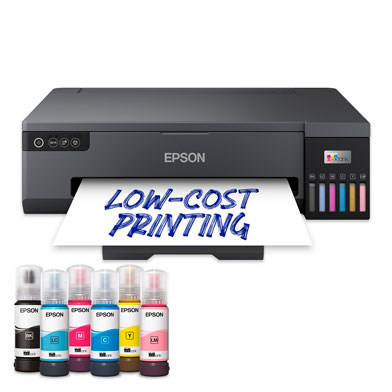

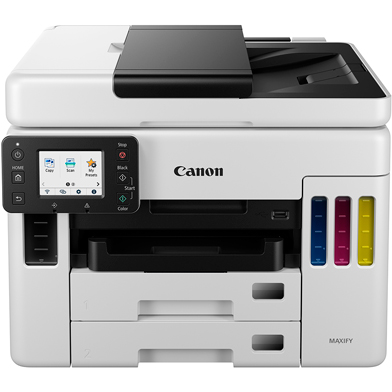
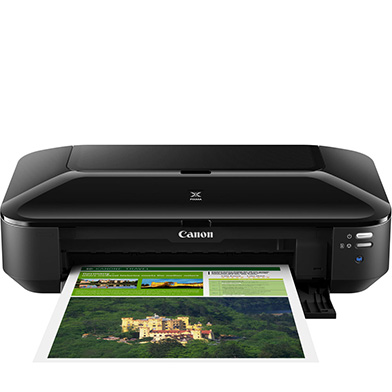

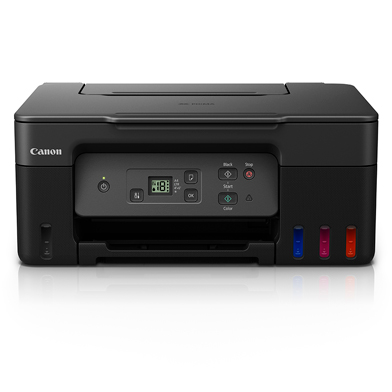


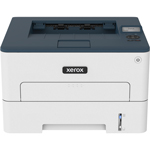
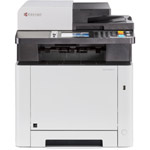
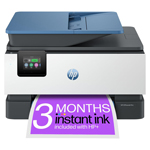
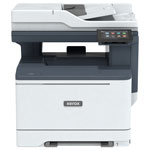
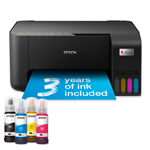
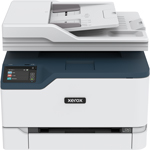
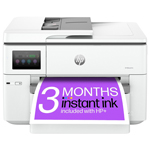
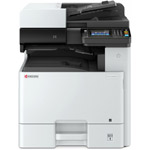
"If you’re looking for a new machine with the ability to handle transfer paper and other unique media types, look no further than the Epson EcoTank ET-18100. This A3+ printer supports iron-on cool peel transfer paper as standard and with it’s 6 colour ink-set and high print resolution, you’ll be able to produce the most stunning and colour accurate t-shirt transfer designs."